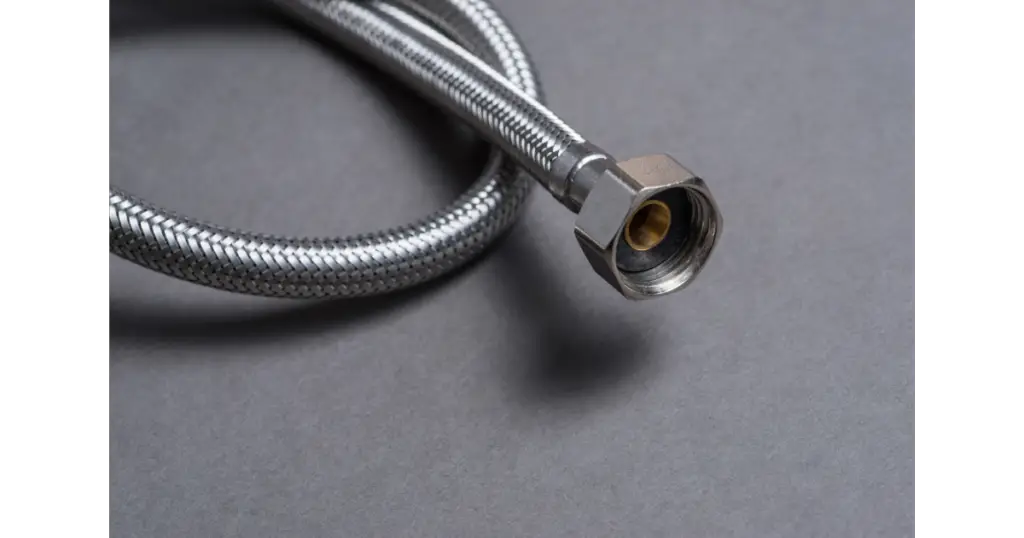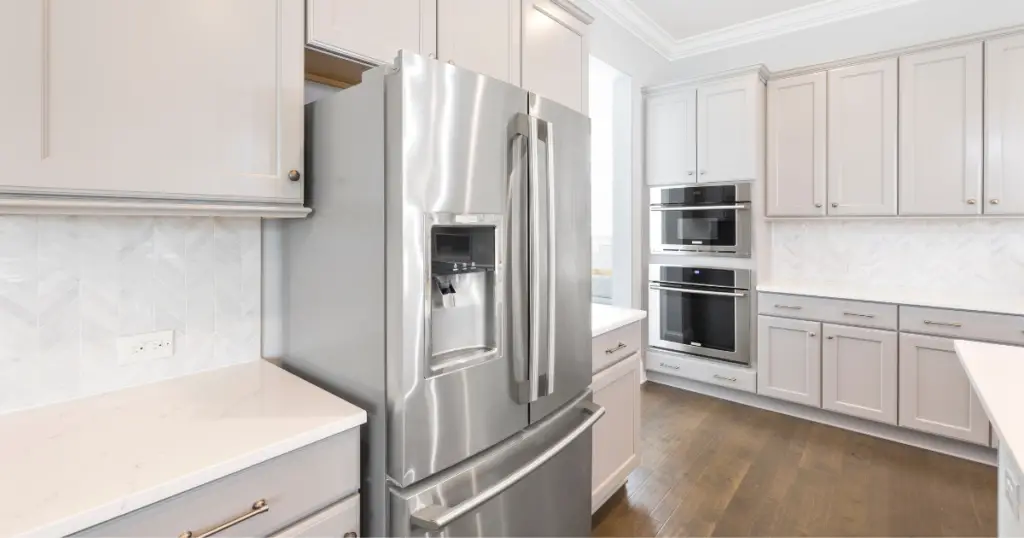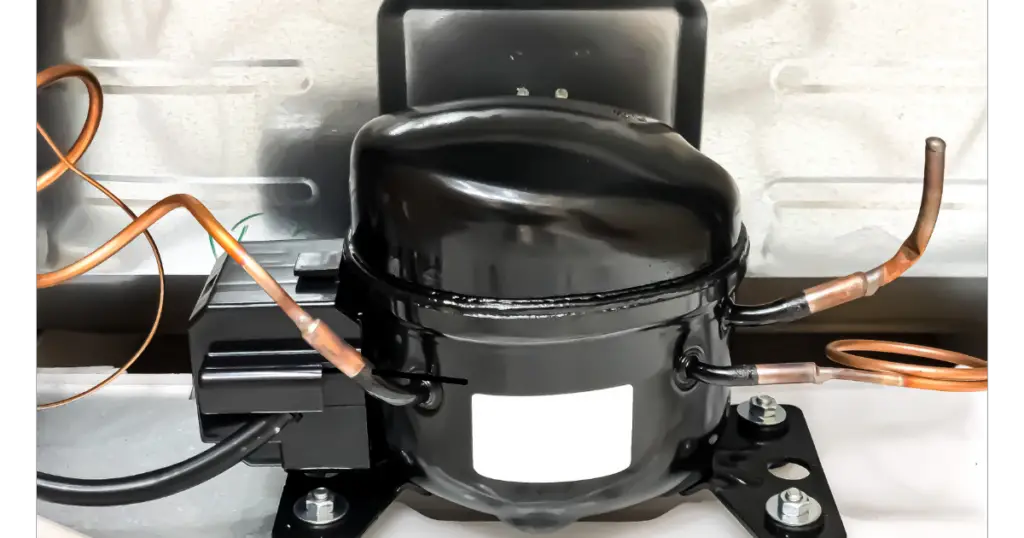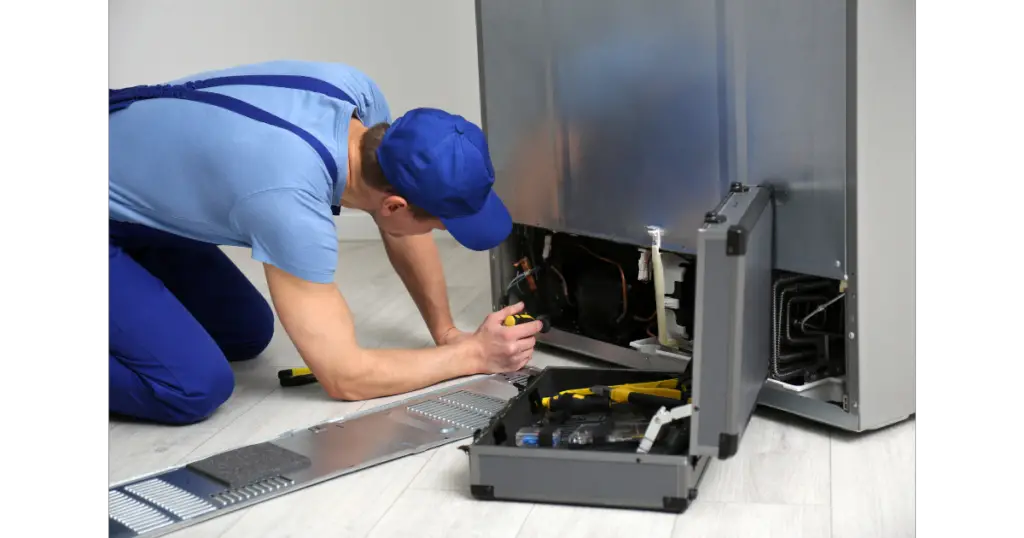In this article, we’ll discuss the common causes of a leaking fridge water line, what you can do to address the issue, and some simple solutions to get your fridge back in working order.

What is a refrigerator water line?
A refrigerator water line is a small hose or tube that connects your fridge to your home’s main water supply. This line constantly flows fresh, filtered water to your fridge’s dispenser and ice maker. Without it, you would need to manually fill up an ice tray and use a separate container for drinking water.
Most modern refrigerators come equipped with built-in water dispensers and ice makers, making installing a water line essential. These lines are typically made from copper or plastic tubing and are connected to the back of the fridge using compression fittings.
There are two types of refrigerator water lines: those that are built into the fridge during manufacturing and those that can be added on later as an aftermarket accessory. The former is generally more reliable and easier to install since it comes pre-installed by the manufacturer.
Refrigerator water line leak – Common Causes
These are all potential culprits when it comes to a leaking fridge water line. Let’s take a closer look at each one:
Water Supply Line
Inspect the plastic supply line on the back of the refrigerator. This is the line that connects your refrigerator to the main water supply in your home. A loose or damaged connection can cause leaks.
Refrigerator Water Inlet Valve
The inlet valve controls the flow of water into your fridge. If it becomes clogged or damaged, it can cause leaks.
Defrost Drain Line
This line removes excess moisture from your freezer during defrost cycles. Water can back up and leak out of your fridge if it becomes blocked.
Drain Pan and Condensation Pan
These pans collect excess water and condensation from your fridge. If this drain gets blocked by a stack of items in the freezer or debris clogging the line, the fridge condenser coils will have to work overtime and start dripping water.
Check Fridge Level
If your fridge isn’t level, it can cause water to pool in certain areas and potentially leak out.
Inspect Ice Maker and Water Dispenser
These features rely on a steady flow of water to function properly. Any issues with their components or connections can lead to leaks.
Evaporator Fan Motor
This motor circulates air throughout your fridge to maintain a consistent temperature. A malfunctioning fan motor can cause excess moisture buildup and leaks.
Shut Off Valve
This valve controls the water flow from your main water supply to the fridge. A defective or cracked shut-off valve can cause a leak.
Door Seals
Damaged or worn door seals can allow warm air into your fridge, causing condensation that may lead to leaks.
By identifying which factors may contribute to the issue, you’ll have a better idea of how to address the problem and prevent further damage.
What do I do if my water supply line is leaking?
When a refrigerator water line leaks, there are various visual cues that homeowners can look for. One of the most common signs is the accumulation of water around the base of the fridge. If this leak has been present for a while, it may cause damage to the baseboards and leave behind stains, mold growth, mildew, cracked paint, or swelling.
The caulking material around the baseboards may also show signs of damage such as splits or holes. Additionally, water damage may be visible on the wall space behind the fridge. It’s important to keep an eye out for these indications and seek professional help if necessary to prevent further damage and costly repairs in the future.
If you’ve determined that the water supply line behind your refrigerator is leaking, don’t panic. Here’s a step-by-step guide on how to fix it:
- Access the Situation: First, assess the damage and determine the extent of the leak. When assessing the damage, look for any visible signs of damage or leaks in the water supply line behind your fridge. You may need to move your fridge away from the wall to get a better view. If it’s a small leak, you may be able to fix it yourself. However, if it’s a major leak or you’re not comfortable repairing it yourself, it’s best to call a professional.
- Turn Off The Fridge: Turn off your refrigerator and unplug it from the wall. This will ensure your safety while working on repairing the water supply line.
- Remove The Water Line: Use pliers or a wrench to loosen any connectors or clamps holding the water supply line in place. Be careful not to damage any other parts of your fridge while removing them. Once removed, inspect the old water supply line for any cracks, kinks, or other damage that may have caused it to leak.
- Measure and Buy: Measure both the length and diameter of your old water supply line so you can purchase an exact replacement at your local hardware store. You must get an exact match in size and type of fitting so that it fits properly and doesn’t cause further leaks.
- Install The Water Line: Once you have purchased a new water supply line, attach one end of it to where you removed the old one on your fridge using connectors or clamps. Then feed the other end through any holes or channels in your kitchen floor or wall that lead back to your home’s main water supply line. Tighten all connections securely with pliers or a wrench.
- Finally, turn on your home’s main water supply valve and check for leaks by running some water through your fridge dispenser or ice maker. If there are no leaks, plug in your fridge and turn it back on.
Check your Copper Tubing if your refrigerator still leaks
If you notice that your refrigerator is still leaking, even after you have cleaned the drain pan and checked the water filter, it might be time to look at your copper line.
Over time, this tubing can become damaged or worn out due to corrosion, pinhole leaks, or physical damage. A damaged copper tube can cause water to leak out and pool around the base of your refrigerator.
Next, run your hand along the entire length of the tubing to feel for any wet spots or areas where there might be a leak. If you find any wet spots or leaks, mark them with a piece of tape so that you can easily locate them later.
Troubleshooting this issue is similar to that of a water supply so follow the same steps.
Professional Help
If you’re experiencing a refrigerator water line leak or your refrigerator is leaking water, it’s important to seek professional help. Professional technicians can quickly diagnose and repair any issues with your appliance’s water line, preventing further damage and costly repairs down the road. They can also perform routine maintenance checks to keep your refrigerator running smoothly.
Additionally, if you have water damage caused by a refrigerator water line leak, it’s important to contact a professional restoration company as soon as possible. A professional restoration company can quickly restore your home and help you prevent further damage.




